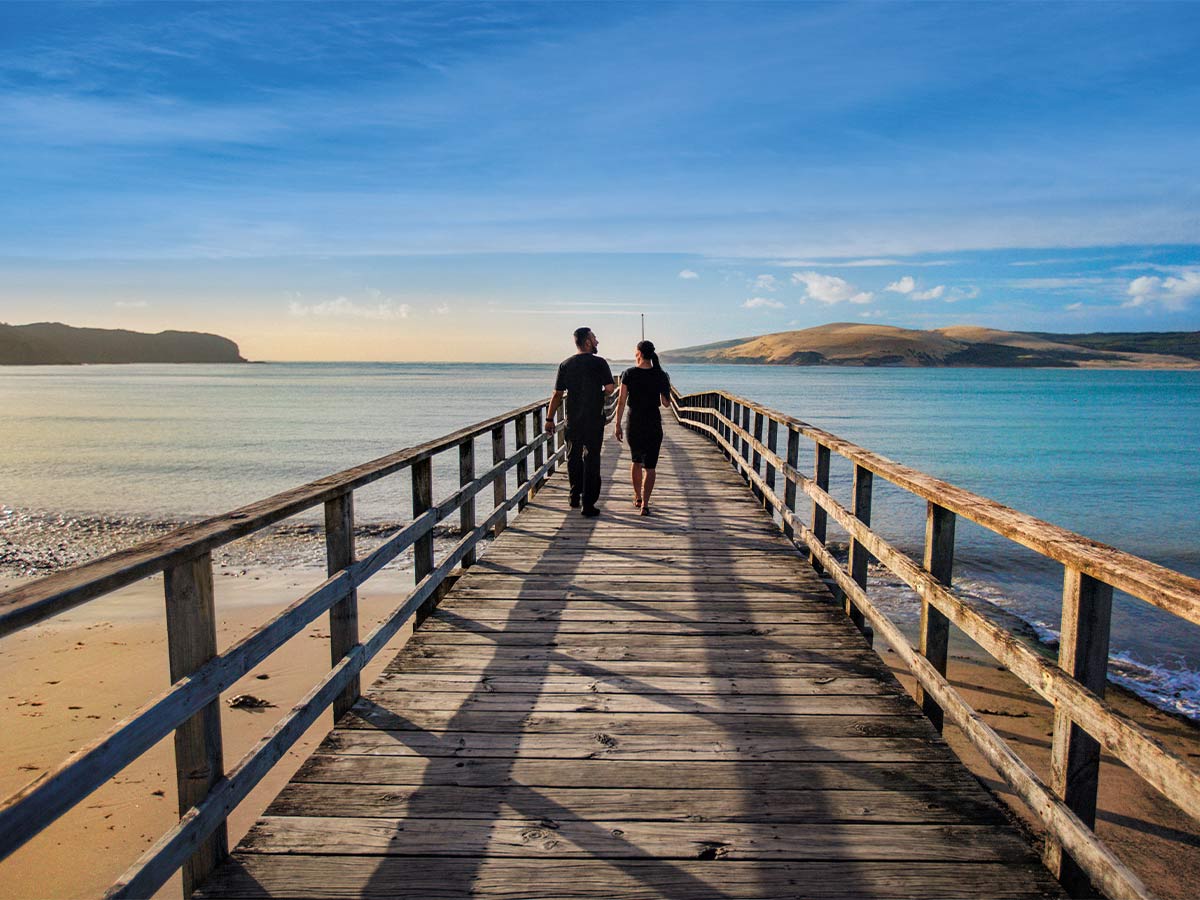Tucked away on the western coastline of Northland, Hokianga is rich in history, natural wonders, culture, and art. It’s also home to one of the most stunning cultural encounters MCD editor Lisa Potter has ever experienced: Manea Footprints of Kupe, as well as Tāne Mahuta, the largest (and oldest) kauri tree known to stand in Aotearoa.
While the experiences are plentiful: harbour cruises (Ranui on Hokianga), scrambling over volcanic rocks (Wairere Boulders), and soaking in the atmosphere of buildings and places that helped shape New Zealand, what stands out as you travel around Hokianga is its authentic Kiwi essence.
When international visitors rave about Aotearoa, it’s usually about the warmth and friendliness they’ve experienced. This is truly at the heart of Hokianga.
Whether you’re visiting one of the many art galleries or heritage buildings, sampling slightly more home-baking and pies than you should, or jumping on the ferry between Kohukohu and Rawene, the same genuine cheerful welcome greets you. It adds to the overall feel-good factor of spending time here and is both uplifting and contagious.
Tiaki means to care for people and place. The Tiaki Promise is to care for land, sea, and nature, and this is intrinsic in the many close-knit communities of Hokianga. There’s respect and appreciation for the land and sea and its history, and odds are when you leave, even after a short visit, you will also feel this connection.
Travelling to Hokianga
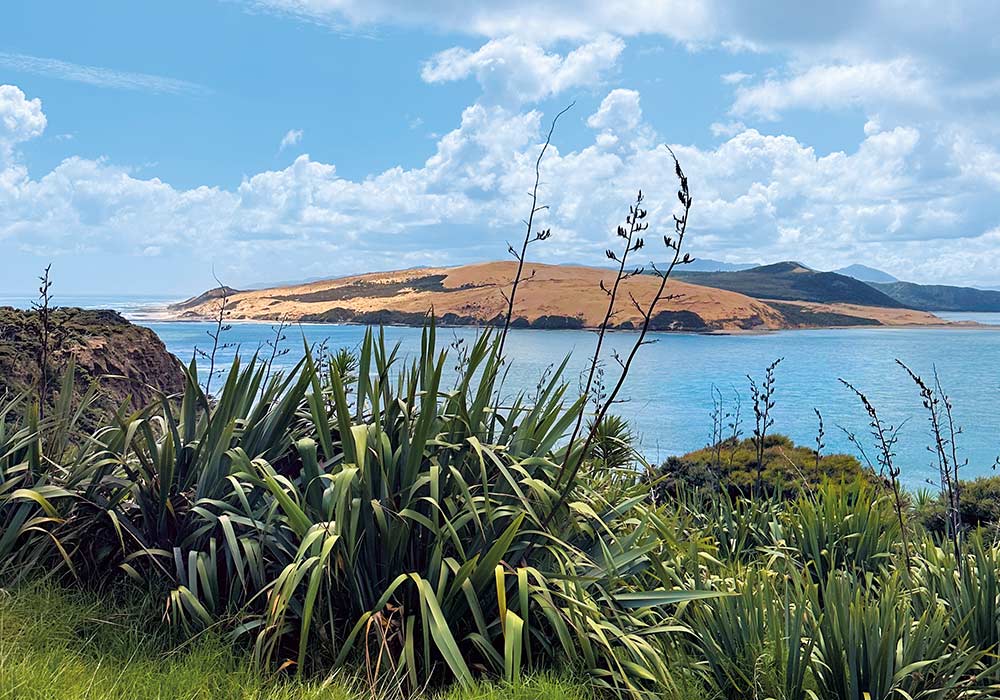
With Mangamuka Gorge still closed following a major slip in 2022 and unlikely to open until later this year, there are many alternative routes to Hokianga, and each offers its own flavour of adventure. State Highway 10 around the east coast is the main detour while the gorge is closed. Both ends of the road adjoin State Highway 1, whichever end of the country you’re travelling from. Approximately 90 minutes from Bay of Islands and 3 hours 30 from Auckland, the small settlements dotted around Hokianga are well worth a visit – and these are plentiful.
It goes without saying that northbound travellers should pause to visit the majestic Tāne Mahuta – the perfect introduction to this ruggedly beautiful part of Aotearoa. The sheer scale of this largest known living kauri tree (estimated at 2000 years old) is breathtaking, and it’s only a five-minute walk along a well-tended walkway (suitable for both wheelchairs and prams). Waipōua Forest offers glimpses of what New Zealand looked like before the arrival of the axe and cross-cut saw. With the region rich in homes and buildings crafted from kauri wood, Hokianga’s original prosperity and growth was founded on kauri mills.
The original Hokianga wharf was built from totara and heart of kauri and as you journey the region, you’ll notice many local buildings reveal kauri walls and ceilings.
Hidden gems
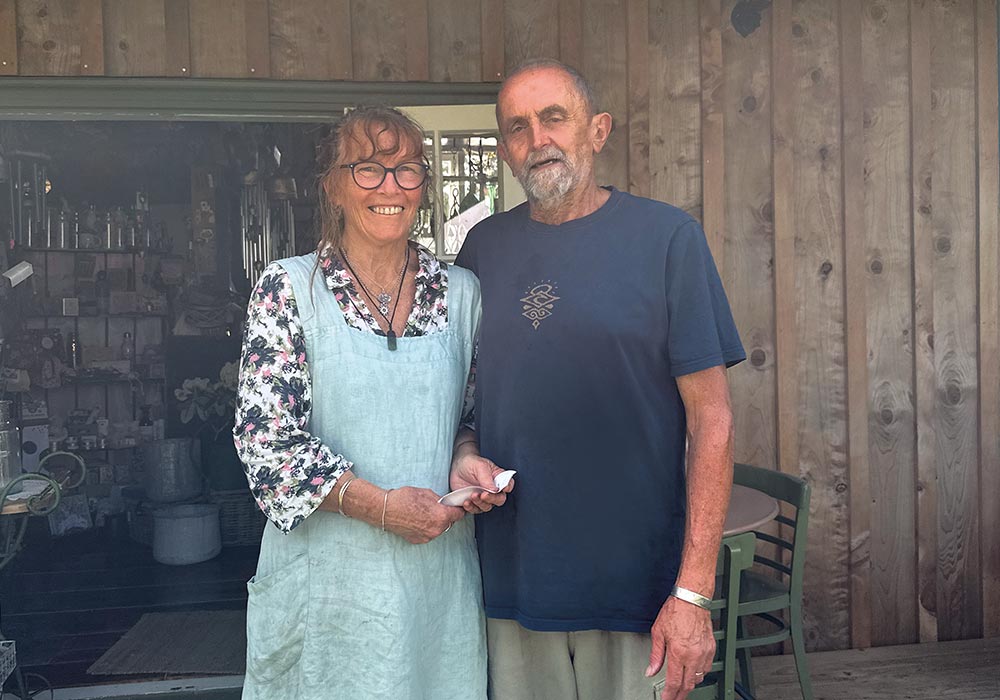
A classic example is Wisteria Way, one of the first pitstops you should factor in after viewing Tāne Mahuta. As you head along State Highway 12 to Waimamaku Valley, you’ll encounter this unexpected pocket of lush gardens and dwellings, which includes a cottage shop and café, as well as two semi-self-contained cottages, a shared kitchen and lounge area, and a backpacker-style dorm for overnight accommodation.
The rambling gardens are a labour of love for owners Bruce and Teresa Lomas, while the cottages feature repurposed kauri from the original 1906 villa. Bruce formerly owned and ran the local Four Square store before he and Teresa decided to dedicate themselves to their little corner of paradise in the hills of Hokianga.
Even if you’re not planning on staying, it’s worth popping in. Housed in a converted barn (made from, you guessed it – kauri timber that was milled just across the valley), it’s now restored into a rustic country shop full of home-grown flowers and beautiful gifts, many locally made. The coffee shop offers tasty cabinet food (mostly home baking), and good coffee and is open from Friday to Sunday.
Further on, Ōmāpere and Opononi offer the bliss of easy-going beach life, framed by giant dunes and Hokianga Harbour. Stop off at Pakia Hill Lookout for a magnificent panoramic view of the harbour below and a short walk to enjoy the highly Instagrammable vista, or meander the Waimamaku Coastal Track.
If Opononi tickles your memory stems, it’s because the area remains renowned since soaring to nationwide fame in the mid-1950s, thanks to the presence of Opo the dolphin. A regular visitor to the harbour, Opo became a national phenomenon, letting children ride on her back, and drawing carloads of visitors every weekend.
History, heritage, mana
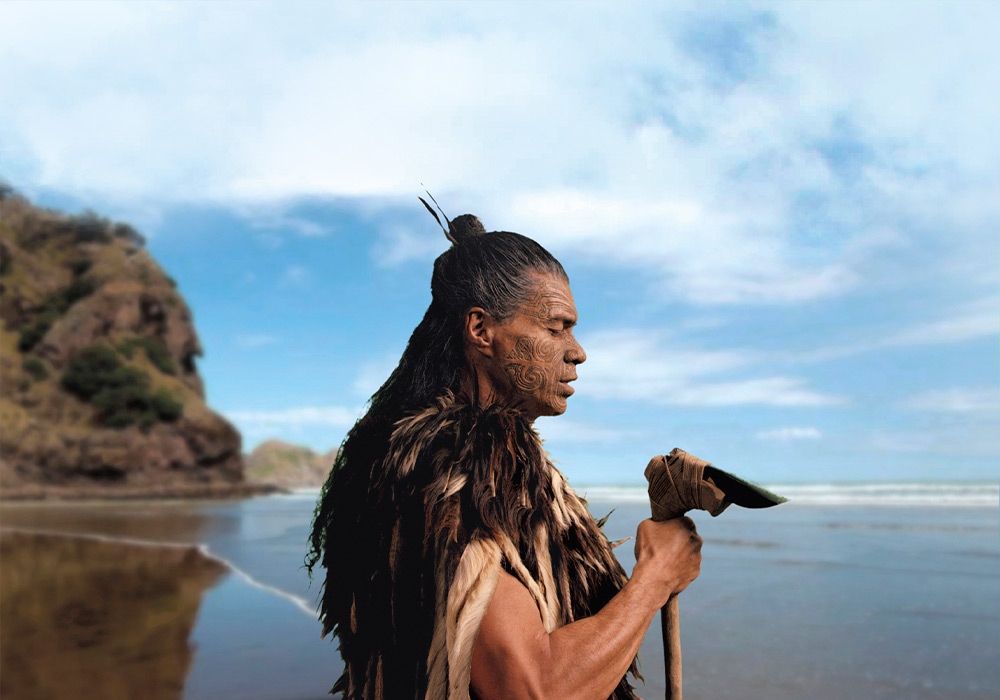
In the heart of the twin settlements of Opononi and Ōmāpere lies Manea Footprints of Kupe, an astonishing Māori cultural centre that tells the story of great ancestor Kupe through a 4D sensory experience. It’s not naturally a given that cultural experience appeals to a local audience as well as international visitors, but Manea is truly in a league of its own.
Without wanting to spoil the surprise(s), there are elements here that are wholly unexpected and make for an experience that’s entertaining, educational, thoroughly enjoyable, and memorable.
With its origins spanning back 20 years to a dedicated group of kaumātua (senior tribal elders) who worked together to preserve and share their heritage, Manea is a legacy that can be enjoyed by all. It captures, preserves, and shares a deep understanding of the origins and history of Hokianga, centred around sharing the Footprints of Kupe and his unique journey in Te ao Māori, the Māori world.
Don’t make a quick decision to dismiss this as a gimmicky tourist offering – it’s anything but. In fact, it’s authentically meaningful and special. While my heritage and upbringing is Irish and not linked to Aotearoa, I felt a deep connection and understanding of the legacy of Kupe across generations.
The 75-minute multisensory journey of guided storytelling uses art, taonga (cultural treasures), film, performance, digital interaction, and more. As well as the guided tour and show, there’s an immersive centre where you can hear stories and watch video interviews sharing snippets of individual heritage. The beautifully stocked gift shop reflects the skills of local artists, carvers, and artisans, and the entire experience elevates your Hokianga interactions to a new level of understanding.
Plan to spend the best part of a day (or stay a while longer) and enjoy Tane Café on-site at Manea or pop down the road for excellent fish and chips at Opononi takeaways.
Rawene
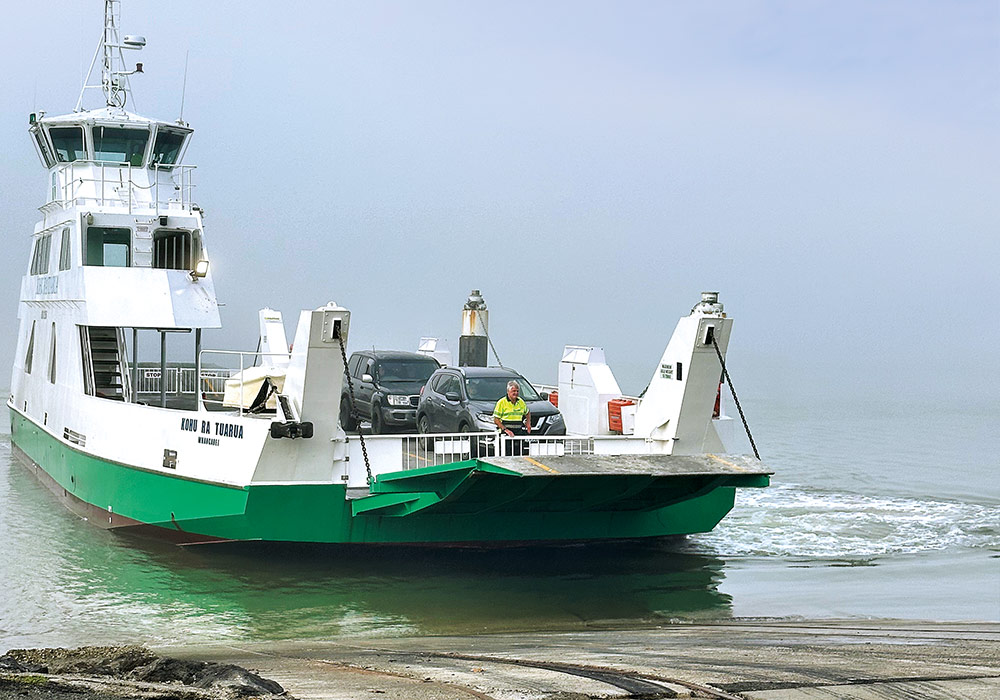
Continue travelling up the coast to Rawene, which straddles Hokianga Harbour with the gorgeous settlements of Kohukohu and Horeke across the water.
It’s just a quick 10-minute trip across to Kohukohu (take your car or RV with you) on the Kohu Ra Tuarua vehicle ferry. Operating seven days a week, departure times are on the website (northlandferries.co.nz/hokianga-ferry) but as a general rule, departs Rawene every half hour.
But first, before leaving Rawene, stay and explore New Zealand’s third-oldest European settlement. Make time to appreciate Clendon House, built in the 1860s, the Masonic Hotel (1875), the Methodist Church (1876), and the courthouse (1875).
Clendon House is open to the public and is something of a rare time capsule. Furnished to its era with many of the home’s original pieces and artwork, it offers a fascinating insight into the rigours of life at that time, even for what would have been one of the more prestigious homes in the area.
Upstairs was originally the children’s space, and it’s a delight to see children’s drawings and tattered paper still lining the kauri walls. Widow Jane Clendon was left to raise and support eight children after the death of her husband James Clendon, who also left her with significant debt. At the tender age of 34, Jane had to use her mettle to juggle eight children aged under 16, a house worth roughly $300, and thousands of pounds worth of debts.
As a well-educated Māori woman, Jane managed to negotiate and trade, and she and her family lived in the house until she died in 1919. It was then handed on down through the Clendon family until it was sold to the New Zealand Historic Places Trust in 1972.
Allow some extra time to explore the kitchen and larder, filled with packaging and kitchen utensils from the late 1800s.
Rawene is also an ideal spot to enjoy a good espresso, gourmet pizza, and a selection of arts and crafts shops – perfect to find a memento of your trip. There’s also a mangrove walkway, which offers an interesting view of a wetland habitat.
Kia ora Kohukohu
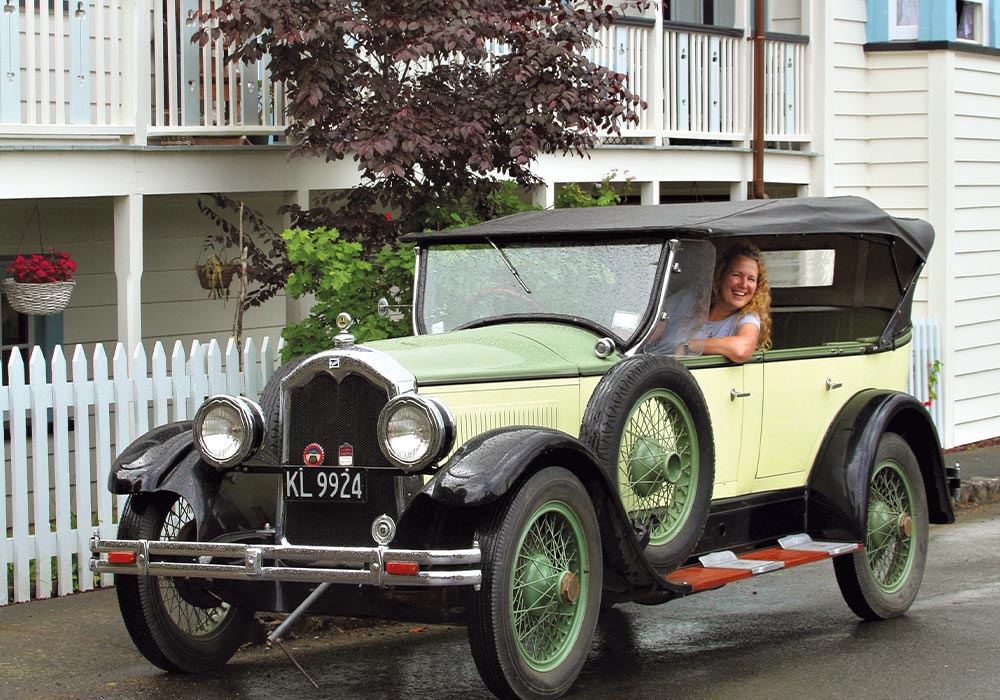
Across Hokianga Harbour nestles the tiny community of Kohukohu. Once an important timber milling town with a population of almost 2000, these days, the town has a population of around 150. Despite this, it’s a community rich in contrasts, with many multi-generational families as well as an intriguing assortment of artists and creatives who’ve settled there.
The blink-and-you’ll-miss-it main street features just a handful of stores. First impressions can be deceptive and there are hidden jewels here, including the glorious community-run Village Arts Gallery (at the time we visited, it was hosting John Parker Ceramics, Jane Molloy-Wolt paintings, and Richard Parker ceramics), a thriving library, op-shop, local dairy, and a café/pub/hotel.
However, it’s the Historic Village Walk that attracts many. Take a relaxed stroll around town for glimpses of a bygone era. There’s a designated Heritage Precinct and a superb trail mapped out around almost 50 points of interest, including New Zealand’s oldest bridge, the War Memorial Arch, Town Hall (built around 1902), the site of the first commercial winery in New Zealand, and even some ancient cannons.
One of the standout buildings is the Kohukohu Historic Villa. Unlike many other buildings on the heritage walk (most of which are privately owned residences), this lavish grand dame operates as bespoke accommodation. Hosts Dee and Sean Morrisey-Butler have transformed what’s possibly one of New Zealand’s oldest buildings into a highly desirable experience. Offering two carefully restored rooms dating back to the mid-1860s, Kohukohu Villa is a historically significant home, originally built as the office for the adjacent kauri mill. Its varied history (supposedly) includes a stint as a billiards room, workingmen’s club, and even a police station with a jail in the basement.
There’s nothing stuffy about this historic home; it’s infused with welcoming warmth and topped off with deliciously bespoke service. Both Dee and Sean boast extensive careers in hospitality – and it shows.
The evening meal (locally caught flounder, Northland eye fillet, and lemon risotto) is a mastery in subtle refinement and the perfection of simplicity and is entirely prepared in-house by the couple. Dee also has a passion for cheese-making and baking, and with the gentlest of hints offers to whip up a batch of my favourite scones to take on the next morning’s harbour boat cruise.
Sean’s forte is focused on beverages, although, he also excels in the kitchen. Having previously owned a cocktail bar and has encyclopaedic knowledge when it comes to flavoursome combinations. There’s also a mighty impressive selection of champagnes.
With their glitzy pasts all part of a previously more hectic lifestyle, these days, they enjoy creating a calm and relaxing getaway, hosting small groups at their lovely home while showcasing fresh seasonal local produce on their menu.
On the water
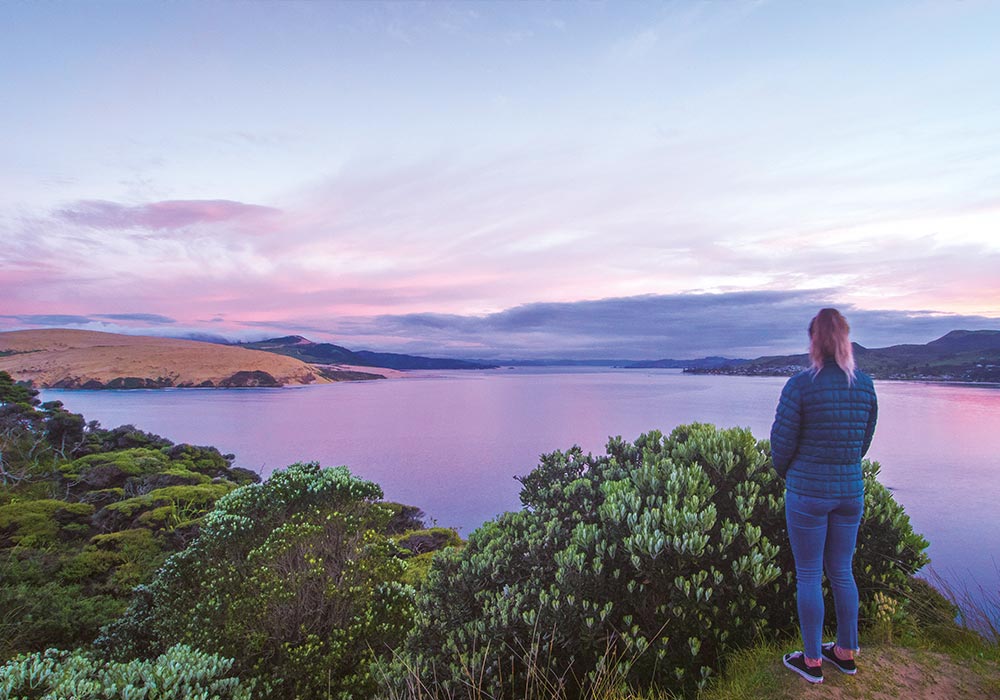
The dreamy Hokianga Harbour delivers everything from pristine beaches, soaring sand dunes, slurpy mangroves, and numerous wharves, where locals and visitors enjoy the relaxed fishing vibe.
Kohukohu is more mangrove than beach, but local skipper Craig Pinkey offers a fantastic harbour cruise with Ranui on Hokianga. Departing from Kohukohu Wharf, the trip kicks off with a stroll down the walkway where confident seagulls sit in formation along the balustrades. It doesn’t take long to recognise that Craig’s ‘tour guide’ role isn’t one where he just trots out the same tired tales each time to visitors. His ingrained knowledge of the region is just as welcome as his easy banter and sense of humour, and it’s a happy group who settle in for the two-hour trip.
Along the way, we discover a local shag rookery, as well as sighting (and photographing) other birdlife, including pied stilts, heron, and oystercatchers, all while learning fascinating facts about the region, and the people who helped shape it. It’s like a good fun gossip session but of the very best sort, as Craig brings the history of Hokianga to life.
Before turning back to explore more of the estuaries, we cruise by Horeke, where he points out the Māngungu Mission house. Built in 1838, it’s the historic site of the third signing of Te Tiriti o Waitangi | Treaty of Waitangi, just days after the first.
Tempting as it is to go ashore, we have a road trip planned there later in the day, so stick to the harbour cruise for more good yarns. Ranui on Hokianga also partners with the Pou Herenga Tai Twin Coast Cycle Trail Trust, shuttling keen cyclists.
The 10-foot boat has a fascinating history and once ferried returned World War II servicemen over Lake Rotorua to Lake Rotoiti and onto the Rotorua Convalescent Hospital.
Rānui was welcomed by pōwhiri and launched into the waters of the Hokianga Harbour on 15 June 2018, and she’s very much a part of the community of celebrating and sharing the many splendours of Hokianga.
Video by VillaMedia

